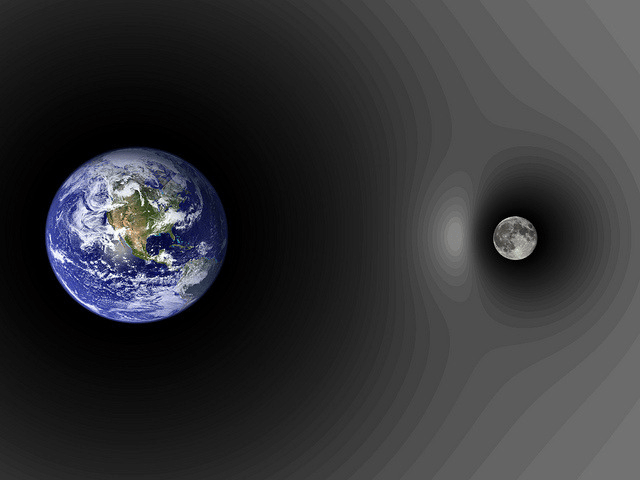Our day-to-day lives are composed of numerous things and objects, all of which define or construct our experience of the world that we live in. Our work tables, mobiles, laptops, that bus honking down the road, your favorite restaurant, that bench in the park, your favorite person, and you – all of them are fundamentally not different from each other. The superficial differentiation comes from the way the atoms are re-arranged in a given entity to give it the shape or the manifestation that is observed macroscopically. But what goes beyond the atoms or the sub-atomic particles themselves?

Development of the Atomic Theory
Democritus, a Greek philosopher (460 BC – 370 BC), was one of the first proponents of atoms. He questioned the prevalent theory of his time on the divisibility of a substance which stated that any material can be divided into a smaller part, which in turn can be further subdivided into other smaller part, and so on. There wasn’t any limit on how small the divisibility would extend.

Democritus argued that there has to be a point in the breaking down of a substance beyond which the smaller part cannot be further disintegrated. He termed the last indestructible component ‘atomos’, which is the Greek word for indivisible.
Along with other contemporary philosophers, he believed that atoms come in varying sizes and shapes, and are in a constant, random motion. They collided in the empty space (popularly known during that time as ‘void’), either repelling or binding to form clusters or clumps. The clumps would gradually grow bigger to give rise to visible matter.

Further Advances in the Subatomic Space
The concept of the atom prevailed for centuries until the end of the 19th century. In 1897, J.J Thomson disapproved of the long-lasting theory that atoms were the most basic form of matter through his cathode ray tube experiment. The outcome was the discovery of one of the fundamental components of atoms – electrons.
Further down the years, new subatomic particles were discovered – protons and neutrons. However, unlike electrons, these two subatomic particles were not fundamental as in the year 1964, quarks were discovered as a result of inelastic electron-nucleon scattering experiments at the Stanford Linear Accelerator Center.

There are 6 types or ‘flavors’ of quarks – up, down, charm, strange, top, and bottom. Up and down quarks have the lowest mass among the six, and the heavier quarks quickly transform into up and down quarks through the particle decay process. The up quark and down quark make up protons and neutrons.
Quarks seem to be true elementary particles having no apparent structure and there is no further resolving into anything smaller than itself. It is now a widely accepted fact that all observable matter is made of electrons, up quarks, and down quarks.
So, Is The World Made Up of Particles?
Though there is no doubt that there are only 3 fundamental particles, however the fundamental building blocks of nature, unfortunately, are not particles but something much more amorphous and abstract. You may think it of as a fluid-like substance distributed throughout the universe, continuously rippling in mysterious ways. They are called ‘Fields’.

Nature is made up of fields, and particles are nothing but waves in these fields, depicting a convenient representation of the latter. A field is something that takes a particular value at every point in space and that value can change in time.
Fields: The Ever-Pervasive and Underlying Component of the Universe
The real world (the world that we live in and perceive) is actually the excitation of fields. Light (or photon) is vibration in the electromagnetic field, electrons are the vibrations in the electron field, and up and down quarks are vibrations in the quark field. So, all particles are in fact excitations in their own fields.
The field theory also eliminates the “action at a distance” forces, one of which is gravity. Even Newton believed that gravity must work locally through something rather than acting instantaneously regardless of any distance.
”It is inconceivable, that inanimate brute matter should, without the mediation of something else, which is not material, operate upon and affect other matter without mutual contact. That gravity should be innate, inherent, and essential to matter, so that one body may act upon another at a distance, through a vacuum, without the mediation of anything else, by and through which their action and force may be conveyed from one to another, is to me so great an absurdity, that I believe no man who has in philosophical matters a competent faculty of thinking, can ever fall into it.
Gravity must be caused by an agent, acting constantly according to certain laws; but whether this agent be material or immaterial, I have left to the consideration of my readers.”
– Issac Newton
The concept of field makes up for the “action at a distance” problem by having the field act as an intermediary between the objects in consideration.

Rise of the Quantum Field Theory
Quantum Field Theory is the combination of continuous fields (Field Theory) and the discrete nature of reality as described by Quantum Mechanics.
Each and every field excitation happen only in chunks of energy. The energy of the wave is determined by the mass of the particle in consideration which is nothing but the energy required to vibrate its field. Fields only accept energy that is at par or above the rest mass of the particle.

Through the works of Michael Faraday and James Maxwell, we now know that the ripples in electromagnetic fields are called light. However, Quantum Mechanics states that light waves aren’t as continuous as they seem to appear, they are rather made up of particles called photons.
Likewise, electrons are the ripples of the waves in an electron field, tied into little bundles of energy as determined by Quantum Mechanics. The electron field can only accept a value (0.511 MeV) which is the mass of one electron.
Fields also exist in a pure vacuum, constantly bubbling and fluctuating as governed by Quantum Mechanics. They are known as ‘Quantum Vacuum Fluctuation’. The below gif shows a computer simulation of field fluctuations in empty space.

Very soon after the Big Bang, there weren’t any particles, but quantum fields. The universe expanded quickly and caught the quantum fluctuations in the act, causing them to stretch across space. Those quantum fluctuations are the ripples or the flickers that can be seen in the cosmic microwave background radiation (the after-effect of the bang). So the quantum fields and the fluctuations were always there since the beginning of space and time itself, especially being in action around 10^(-30) secs after the Big Bang.

Summary
Even though on a superficial level, each one of us is distinguishable from the other and the same goes for almost every object and material too, we are basically composed of ripples in the same three fields – the electron field, the up quark field, and the down quark field.
Fundamentally, the reality is different when it is measured versus when it is not. Waves resolve to particles when measured. This is what happens in our world. Every being and thing is associated with fields and when we look at it, the waves collapse to particles and hence we see that entity in a material form.
The quantum fields vibrating at every location in space and in every moment in time are the true and fundamental building blocks of the world.

